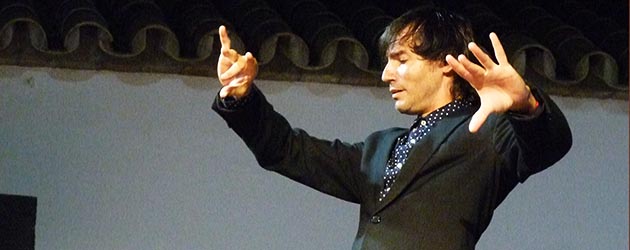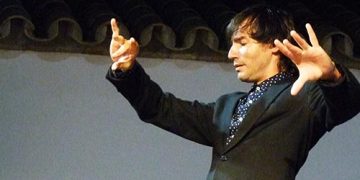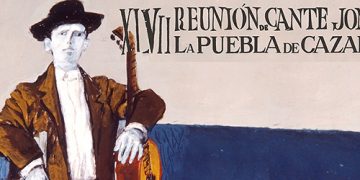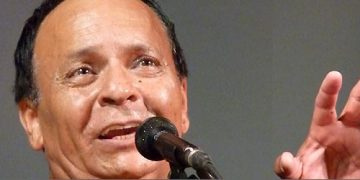Text and photos: Estela Zatania
49th Reunión de Cante Jondo
Saturday, July 8th, 2017. 11:00pm
La Puebla de Cazalla, Hacienda La Fuenlonguilla
Voice: Raúl Montesinos, Rafael de Utrera, La Macanita, Carmen Linares. Solo guitar: Antonio Carrión. Guitar: Antonio Cáceres, José Quevedo “Bolita”, Domi de Morón, Manuel Valencia. Dance: El Junco and his group with Óscar Lagos (guitar), Emilio Florido, Jesús Flores (voice), Roberto Jaén (rhythm).
On July 29th, 2016, just three weeks after that year’s Reunión de Cante Jondo, the unthinkable occurred. José Menese died. The signer whose name is synonymous with La Puebla de Cazalla as far as flamenco is concerned, the most flamenco of the activist singers during Spain’s political transition and one of the main founders of this venerable festival, ceased to exist a half-century after the first edition of an event the singer had only missed on one occasion. His mission in life of cultivating and encouraging interest in this art-form in his hometown, had been fulfilled, and it was time to rest.
Last night in the patio of the Hacienda la Fuenlonguilla, where the 49th edition of the festival was held, maestro Menese was present in the memory of all the artists and audience members, both local and from out-of-town, he was in the air that smelled of rosemary and in the old stone walls of the beautiful venue. La Puebla de Cazalla is a state of mind, a place that invites you to enjoy flamenco with an exquisitely respectful audience.
It wasn’t the best night. A strong cold wind was blowing across the countryside, making it very unpleasant for anyone without a blanket and warm clothing. The patio didn’t fill up, and the performances were correct but uneventful.
One important exception was Antonio Carrión’s guitar solo that opened the program: siguiriyas composed specifically in honor of Menese. A true “solo”, in the human sense as well as the musical. This guitarist has lost a friend and companion of many years, and his interpretation was dense with emotion, triggering a heartfelt ovation.
Local singer Raúl Montesinos, holder of one of the two Lámparas Mineras in La Puebla, interpreted lesser-heard forms, just as Menese used to do. Cartagenera and levantica of Cojo de Málaga, and liviana with siguiriya, toná liviana and cabal, played “por medio” by Antonio Cáceres, give an idea of this singer’s commitment.
Rafael de Utrera, who is seldom seen in these festivals, delivered some of the best moments of the night. José Quevedo “Bolita”, a guitarist who surprises without throwing you off, provided the accompaniment for varied cantinas, soleá apolá and malagueña with abandolao, and the collaboration of another guitarist, Domi de Morón, left us drenched in the bulerías style of the neighboring town.
Macanita defended Jerez with the important collaboration of Manuel Valencia on guitar, and the rhythm of Chícharo and Macano. Malagueñas, soleá, “siguiriyas a mi manera” and bulerías.
Antonio Carrión opened the second part with his bulerías solo, followed by the group of Juan José Jaén “El Junco”. The dancer interpreted a sort of Cádiz suite that combined soleá and tangos with a dry elegance that made everything look easy.
Before the traditional ending with tonás and fiesta finale, Carmen Linares, with the guitar of Salvador Gutiérrez, struggled to control worn vocal cords, compensating with knowledge and years of experience.
And next year we’ll be back to celebrate the fiftieth anniversary of this admirable event that continues to defend classic flamenco year after year.
Descubre más desde Revista DeFlamenco.com
Suscríbete y recibe las últimas entradas en tu correo electrónico.
































